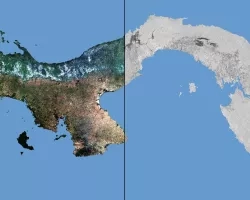The goal of the System for Mapping and Predicting Species of Concern (SMAP-SOC) project is to provide natural resource managers with a tool to both map current locations of freshwater species of concern (SOCs) and predict future changes in their distributions. Freshwater SOCs include both invasive species (e.g., zebra mussels) and threatened and endangered (T&E) species (e.g., cutthroat trout). SMAP-SOC will provide managers with the current locations of SOCs from a combination of crowd-sourced point observations based on molecularly identified samples of biota and environmental DNA that is released from an organism into the environment. Predictions of current and future distributions will be made using species distribution models (SDMs) developed from these observational data. SDMs predict the likelihood of species occurring at un-sampled locations based on climate and Earth observation data (e.g., land use, vegetation, topography). SDM results will be portrayed as heat maps that describe how predicted occurrence probabilities vary across the potential range of each species. The SDMs can also be used by managers to forecast how species distributions will likely shift in response to future climate and land use changes by coupling the SDMs to land use, climate, water chemistry, and water temperature models. During the feasibility stage we will develop a prototype tool to map the distribution of an invasive species, Didymosphenia geminata, and determine whether these maps have the requisite precision, interpretability, and ease of use to effectively be used by Bureau of Land Management managers to decide on appropriate management actions. Knowing current locations, likely distributions of species of concern, and how these distributions are likely to change will help natural resource managers anticipate management issues and design more effective protection (T&E species) and control (invasive species) strategies.
Project


